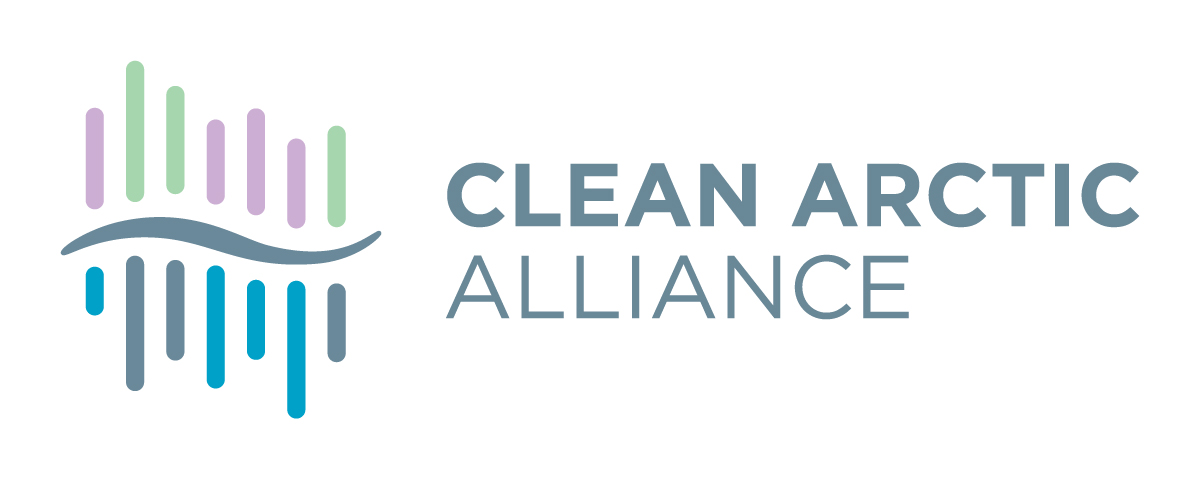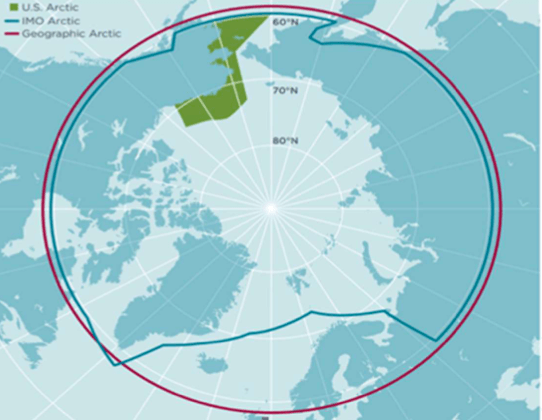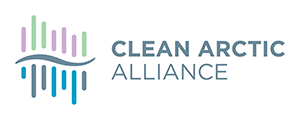
Letter from the Clean Arctic Alliance on the subject of Arctic EU ship and climate policy and black carbon emissions which calls for the Fuel EU Maritime proposal to be strengthened in ways to better protect the Arctic from black carbon emissions emanating from shipping.
- Letter to EU Commission Executive Vice President Frans Timmermans: Arctic EU ship and climate policy and Black Carbon emissions
- Letter to EU Foreign Affairs & Security Policy Josep Borrell Fontelles: Arctic EU ship and climate policy and Black Carbon emissions
- Letter to EU Commissioner for the Environment, Oceans and Fisheries Virginijus Sinkevičius: Arctic EU ship and climate policy and Black Carbon emissions
- Letter to EU Commissioner for Transport Adina Vălea: Arctic EU ship and climate policy and Black Carbon emissions
- Letter Envoy for Arctic Matters Michael Mann: Arctic EU ship and climate policy and Black Carbon emissions
Letter: Arctic EU ship and climate policy and Black Carbon emissions
The Clean Arctic Alliance urges the Commission and EU member states to act now to reduce both ship GHG emissions and black carbon emissions in and near the Arctic consistent with last month’s IMO Resolution on ship Black Carbon and the declaration in the Commission’s October Communication (1) that “the EU will lead the drive for Zero Emission and Zero Pollution shipping in the Arctic Ocean, in line with our Green Deal objectives and the Fit for 55 package”. The Arctic is in crisis and immediate action is required to avert catastrophic climate change impacts on the entire planet and on human civilization.
Black carbon (BC) contributes 21% of shipping’s CO2-equivalent GHG emissions on a 20 year timescale (2) and, as a short-lived climate forcer (GWP20 = 3200), has a far stronger radiative forcing impact than even methane, let alone CO2. Moreover, when black carbon is deposited directly on ice or snow – as by Arctic shipping – its warming impact is further magnified up to 10 times. The IMO’s MEPC 77 Resolution calls on IMO member states to “commence addressing the threat to the Arctic from Black Carbon emissions’ …and urges both “member states and ship operators to voluntarily use distillate or other cleaner alternative fuels” when operating in or near the Arctic. The EU has a clear obligation to act now as EU related ship emissions form a substantial part of the Arctic’s shipping problem. The claim in the Communication on EU Arctic policy that “the EU is responsible for 31% of CO2 and 16.5% of black carbon emissions from maritime transport in the Arctic” is in fact a gross under-estimate (3) – by an order of up to 600%. Because the EPRD consortium supportive study (4) excluded – by up to 1000km – virtually all direct routes used by ships when travelling from the Arctic to EU ports. These excluded routes are hundreds of km to the east of Iceland and track down the entire west coast of Norway. Ships then enter EU ports either through the North Sea or via Ireland’s Atlantic coast or the Irish Sea. From the tip of the Norwegian mainland southwards, these routes are not even covered by IMO ECA regulations on sulphur and NOx except when ships enter EU ports via the North Sea and then the English Channel or Baltic Sea. Because there are no other IMO ECA’s in the EU.
Both the Glasgow COP and last August’s IPCC AR6 report stressed the urgency of halving global CO2/GHG by 2030 to maintain any chance of keeping global warming within 1.5oC. And that cutting short-lived climate forcers will deliver far more immediate reductions in warming. This applies to black carbon just as much as to methane. In the case of Arctic ship black carbon, the only result of a decade of work at the IMO is a voluntary call for action by ships and states, but even this is clearly a green light for regional action. As a very significant shipping emitter in the Arctic, the EU has a clear obligation now to act and to see that the Fit for 55 proposals are adapted to include black carbon.
The Fuel EU Maritime proposal should be strengthened in several ways. The IMO 2020 4th ship GHG study sets out a clear methodology to account for ship black carbon emissions on a GHG equivalent basis, including an agreed set of BC emission factors by engine type. This data along with black carbon GHG equivalents can be integrated into the Commission’s proposal in the same way as both methane and N2O.
In addition, strengthening the proposed ship GHG intensity improvement targets starting with those for 2025/2030 will promote the ready adoption of existing low cost mitigation measures such as wind and slow steaming – which reduce both CO2 and BC and for too long have lacked any regulatory incentives. Applying 20 year GWPs to both methane and black carbon also more readily reflects their climate impact and the critical role their mitigation can play in the years remaining to 2050.
Fuel EU Maritime includes a welcome command and control provision from 2030 mandating the progressive use of shore-based electricity (OPS) for ships at berth to tackle port air pollution. However, on both air pollution and climate grounds, the case is surely even more clear and urgent to also mandate within Fit for 55 the exclusive use of distillates or cleaner fuels by all Arctic EU-related shipping. Such a mandatory fuel switch should apply for the entire journeys under MRV scope – both within the Arctic and to/from EU ports, because it is the MRV scope that regulates all EU ship related emissions, and also be applied to European government-owned ships. Switching from VLSFO to burning distillate fuel in the same ship engine – such switches are a routine daily occurrence when entering ECAs – reduces BC emissions by some 50-80% (5). It will also enable the fitting of diesel particulate filters which cut BC emissions by well over 90%. The mandatory fuel switch should also ban the use of scrubbers by all ships on MRV-regulated journeys which touch the Arctic geographic definition. The EU and its member states can impose this fuel switch and scrubber ban as a condition of entry to European ports. The Commission already plans to use European Port State Control (PSC) procedures to enforce the mandatory use of renewable and low-carbon fuels (RLF). The geographic definition of the Arctic that is used and recognized exclusively by both the EU and the Arctic Council should apply – not the Polar Code definition which was only ever intended to protect the safety of ships operating in ice covered waters (6). Waters between Iceland and Norway’s coastline are never ice covered because of the influx of warm water from the Gulf Stream. The geographic definition of the Arctic (all points above latitude 58.95 North) includes the entire Norwegian west coast, Iceland, the Faroe Islands, and parts of Skagerrak, leading to the port of Oslo, and of the Gulf of Bothnia.
In requiring this fuel switch, the EU should also proceed with the early and needed implementation of the IMO Arctic HFO ban which regrettably contains major implementation loopholes extending through 2029. Early enforcement in the EU of the IMO HFO ban can draw on established precedents in EU law set out by Professor Henrik Ringbom, formerly EMSA’s head of Environment (7). A further aspect to consider is that currently the vast bulk of marine fuel bunkered at EU ports is imported from Russia while European refineries have long moved on to produce higher value and cleaner marine distillate and road fuels. So a switch to distillates will lead both to an improvement in the quality of marine fuels bunkered in the EU and help mitigate the climate and air pollution impacts of their import into the EU in the first place.
Yours sincerely,
Dr Sian Prior
Lead Advisor, Clean Arctic Alliance
Annex
On 13 October 2021, the EU’s External Action Service issued a major new Communication promising “a stronger EU engagement for a peaceful, sustainable and prosperous Arctic” (8) that would “promote faster and more ambitious emission reductions and “lead the drive” for zero-pollution of shipping in the Arctic. The expert study underlying the Communication (9) noted, however, that so far, the EU has favoured the “least controversial approach” – pursuing “lowest common denominator” outcomes at the IMO and Arctic Council. It also makes clear that natural gas and crude oil exports to Europe and Asia along Russia’s Arctic coastline are the primary driver of increasing Arctic shipping activity…that the “vast majority of traffic comes from destination shipping, not from transit shipping” with more than a third of all vessels travelling to and from the Arctic calling at EU ports. Marine transport is highlighted as the Arctic’s fastest-growing economic sector as most Arctic activities – oil and gas, related large-scale infrastructure projects, cruise-based tourism, fisheries, and transit shipping – all rely on seaborne transport”. Cargo volumes have grown ten-fold over the past decade on Russia’s Northern Sea Route, with primary oil and gas projects (10) alone accounting for more than 80% of Arctic maritime transport by cargo volume. In 2019, EU imports of Russian Arctic LNG produced by Novatek, represented 86% of LNG shipments from the Russian Arctic. Only 14% went to Asia. So that the transport of LNG in the Arctic accounts for more than half of the EU’s total Arctic maritime transport CO2 emissions. In 2019, two thirds of EU imported natural gas came from Russia (41%) and Norway (16%); 27% of EU’s crude oil imports came from Russia and 7% from Norway; and 47% of EU solid fuel imports (mostly coal)originated in Russia (11). It is to be noted that the vast bulk of marine fuels bunkered at EU ports originates from Russian refineries and has already been imported by ship into the EU for sale!
The report adds that “marine transport and the resulting environmental impact represents a significant linkage between the EU and the Arctic. Hundreds of EU MS-flagged or EU-based entity-owned vessels travel to, from, and within the region. Many more carry European products and passengers across the region or others call at EU ports at the beginning or end of Arctic voyages. Overall it found that the EU is responsible for 36% of BC deposition in the Arctic and 16.5% of maritime transport BC there.

But this EU 16.5% of Arctic marine transport BC is a wild underestimate! As are EU Arctic ship related CO2 emissions. The EPRD study supporting the Communication uses the accepted EU and Arctic Council geographic definition of the Arctic (red circle on the below map) for all its work. The EPRD analysis on EU related Arctic ship emissions however uses the much more restrictive definition (blue line on the map) which was drawn up to regulate ship safety in ice covered waters through the IMO’s Polar Code. Efforts at the IMO (adoption was in 2015) to extend the geographic scope of the blue IMO line were rejected. Iceland, its EEZ and the entire Norwegian west coast (which is never ice covered due to the Gulf Stream) are thus not included in the Commission’s EPRD analysis of EU Arctic BC and CO2 emissions, despite very significant levels of emissions arising from these areas and thus affecting the Arctic. Not to mention the sea lanes then extending southwards from the Norwegian Sea onwards to EU ports.

A 2015 ICCT study (12) graphic (below left) shows ship BC concentrations within the limited Polar Code boundary (in blue). By far the heaviest BC concentrations occur in the sea areas south of and outside the IMO Arctic. The IMO definition excludes possibly 75% of total Arctic ship BC (and CO2) emissions before even counting BC from ships proceeding south beyond the geographic Arctic to EU ports. The Northern Sea route office’s graphic (13) (below right), shows June 2021 routes carrying LNG from the Arctic to EU ports. None go near Iceland let alone the IMO Polar Code boundary far out to the west. Consideration of Arctic shipping CO2 and BC emissions should use the geographic Arctic definition scope.
 |
 |
Henrik Ringbom in Chapter 9 of Liu N, et al, 2017, “The European Union and the Arctic”, makes a clear legal case that “the principal option available to the EU to regulate shipping in the Arctic would be in the port state capacity, which is also the jurisdictional mechanism preferred by the EU to regulate maritime safety more generally. Roughly one third of the ships making use of the transpolar routes have their point of departure or arrival in the EU. It can thus be expected that if trans-Arctic traffic were to boom, one of the end ports would be located in the EU”. “There are many ways to influence shipping through measures taken in ports. The least controversial ones focus on implementation only, typically in the form of port state control. The Arctic has no PSC regime of its own, but all coastal States in the area participate in the Paris MOU, which is also closely calibrated with the EU’s own PSC legislation”.
It is noted here that Port State Control (PSC) EU processes are being used to enforce the use of renewable and low carbon marine fuels (RLF). Professor Ringbom also notes that the European Parliament, in its 2011 resolution on the Arctic, specifically called for the EU to adopt supplementary port-State measures in case international negotiations at the IMO did not produce the desired results for the Arctic.
In the case of IMO work on Arctic ship BC impacts on the climate, we are now at that point especially as the MEPC BC Resolution now invites IMO member states to take their own measures. Ringbom also notes that “Port States could also influence shipping by unilaterally implementing international rules that have been adopted but that have not yet entered into force, for ships operating in the Arctic that visit EU ports”. Such a finding is particularly relevant to both the IMO HFO ban which comes (only partially) into effect in 2024 and for the mandated fuel switch to exclude the use of scrubbers.
Professor Ringbom goes on to note that “precedents of EU requirements advancing the application of international rules ahead of their international entry into force include Council Regulation No 3051/95 on the safety management of roll-on/roll-off passenger ferries (ro-ro ferries) [1995] OJ L 320/14 and Regulation 782/2003 on the prohibition of organotin compounds on ships [2003] OJ L 115/1”. And that “a more far-reaching alternative would be to implement rules that have been adopted only in the form of recommendations at the international level. The Polar Code’s Part B includes several examples, including a ban on the carriage and use of heavy grades of oil in the Arctic”. Also that “measures that serve to implement standards with an international basis (e.g. in the form of non-binding measures, or international rules that have not yet entered into force) will presumably be easier to justify than purely unilateral port State requirements.”
Notes:
- JOIN(2021) 27 final of 13 October 2021. https://eeas.europa.eu/sites/default/files/2_en_act_part1_v7.pdf With factsheet https://ec.europa.eu/commission/presscorner/detail/en/FS_21_5231
- IMO 4th GHG Study 2020.MEPC 75-7-15
- See Annex.
- https://eprd.pl/wp-content/uploads/2021/06/EU-Policy-Arctic-Impact-Overview-Final-Report.pdf
- The MEPC draft BC Resolution co-sponsored by 11 Members – 8 from Europe – stated that “when used in the same engine, a switch to distillate reduces Black Carbon emissions per kilogram of fuel consumption by up to 79% in 2- stroke engines and by up to 52% in four-stroke engines”. This part of the Resolution was deleted from the approved version after noisy interventions by a very small minority of flag states.
- See Annex.
- See Chapter 9 “The EU and Regulating Human Activities in the Arctic” by Henrik Ringbom in Liu N, et al, 2017, “The European Union and the Arctic”. Ringbom dismisses EU policies on Arctic shipping to date as “superficial” – or quoting EU documents themselves – as that of a “mere monitor”. See Annex for EU precedents cited by Ringbom.
- JOIN(2021) 27 final of 13 October 2021. https://eeas.europa.eu/sites/default/files/2_en_act_part1_v7.pdf With factsheet https://ec.europa.eu/commission/presscorner/detail/en/FS_21_5231
- https://eprd.pl/wp-content/uploads/2021/06/EU-Policy-Arctic-Impact-Overview-Final-Report.pdf And summary overview https://ec.europa.eu/environment/international_issues/pdf/EU-policy-Arctic-Impact-Report-Summary.pdf
- Primarily Russia’s Yamal LNG, Arctic LNG II, Kara Gate oil terminal and Prirazlomnoye oil platform and Norway’s Melkøya LNG plant and Goliat oil platform which are both almost as far north in Norway as you can go.
- https://ec.europa.eu/eurostat/cache/infographs/energy/bloc-2c.html
- https://theicct.org/sites/default/files/publications/HFO-Arctic_ICCT_Report_01052017_vF.pdf
- Activities June 2021 | Northern Sea Route Information Office (arctic-lio.com)

